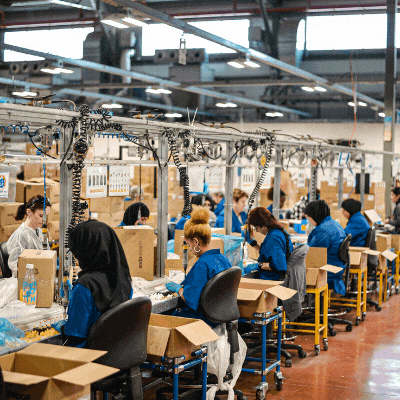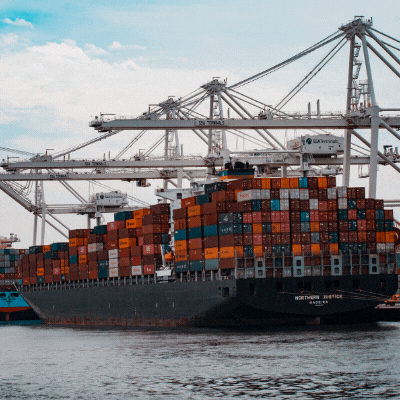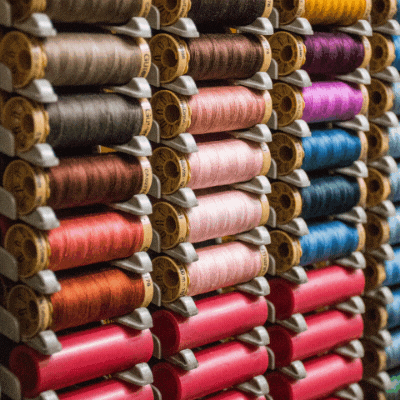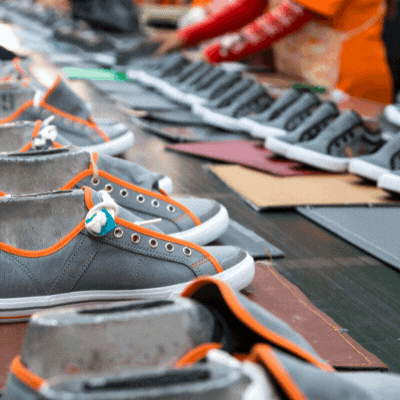An alarming email leaked on November 23, 2021. In the communication, Nike informed a retailer that it had canceled all of the store’s existing orders through most of 2022 due to supply chain issues. As a result, the store was suddenly without stock for the remaining Holiday 2021 Season, Spring 2022, and Summer 2022. If this situation were a singular occurrence, it likely would have remained in the news cycle for a short period. However, the incident showed a light on a growing crisis lurking on our periphery for more than a year.
How Does The Supply Chain Work?
First thing’s first, what is a supply chain? It is the network between a company and its suppliers to manufacture and distribute a product to the consumer. It’s a multi-step process. Depending on the type of product, some of the steps include — acquiring and molding raw materials into finished products, transporting those products, and distributing them to the final buyer.

Companies partner with vendors, warehouses, transportation services, distribution centers, and eCommerce or brick & mortar retailers as part of their production and manufacturing process. Because of this, disruption to one of these cogs can interrupt the supply chain.
Companies partner with vendors, warehouses, transportation services, distribution centers, and eCommerce or brick & mortar retailers as part of their production and manufacturing process.
Supply chain partners can either be stateside or in international territories. It’s become common for companies to outsource much, if not all, their products to global markets to limit expenses. In addition, companies often employ a supply chain manager to ensure the supply chain is running smoothly. Or, in the case of Nike, an entire department is dedicated to supply chain management and logistics.
There are three primary flows of supply chain management: the product flow, the information flow, and the finances flow.
- The Product Flow refers to the physical movement of goods from a supplier to a customer and involves customer service.
- The Information Flow focuses on availability regarding the status of an order by reporting on the location of orders and updating delivery status.
- Finally, the Financial Flow handles credit terms, payment schedules, consignment, and title ownership arrangements.
What Went Wrong?
There isn’t a straightforward answer to what led to the supply chain crisis in fashion. The Covid-19 pandemic further exacerbated supply chain issues as workplace shutdowns led to a lack of workers. This in turn caused manufacturing and shipping delays. Nike has reported many problems, from shipping container shortages to a lack of workers.

The sneaker giant has also cautioned they may continue to experience manufacturing problems due to local lockdowns at factories in Vietnam and Indonesia. Nike, along with Under Armour and Adidas, has already reported a shortage of inventory and synthetic materials used to make athletic shoes. When supplies are in shortage, companies drastically inflate prices. The Bureau of Labor Statistics shows shoe prices increased 6.5 percent in September 2021 in comparison to September 2020. Women’s shoes were up 4.9 percent, children’s 11.9 percent, and men’s increased 5.5 percent.
Cotton shortages are also a growing concern. Dirk Vantyghem, Director General of the European Apparel and Textile Federation (Euratex), discussed the implication of rising prices, “It’s not just a shortage of supplies. There are some serious price increases which are making our European textile producers nervous.” In August of this year, raw cotton prices were 18% above their 2020 average.
The Bureau of Labor Statistics shows shoe prices increased 6.5 percent in September 2021 in comparison to September 2020. Women’s shoes were up 4.9 percent, children’s 11.9 percent, and men’s increased 5.5 percent.
What’s Being Done To Navigate The Supply Chain Crisis?
Fashion brand Benetton made waves earlier this year when Chief Executive Massimo Renon announced that the brand would relocate some of its manufacturing from Asia to Southeast Europe and North Africa. The move would ease costs of shipping and expedite delivery. “It’s a strategic decision to have more control on the production process and also on transport costs. Today a shipping container that used to cost $1,200-1,500 can cost $10,000-15,000, with no certainty of a delivery date,” Renon explained.

Can The Supply Chain Be Fixed?
That’s a difficult question to answer. The bad news? There aren’t any short-term fixes to address the supply chain. The simplest remedy would be to hire more workers in manufacturing and transportation. However, that requires companies willing to spend on labor and workers interested in those job vacancies.
There aren’t any short-term fixes to address the supply chain. The simplest remedy would be to hire more workers in manufacturing and transportation. However, that requires companies willing to spend on labor and workers interested in those job vacancies.
The slightly better news is that even though prices are surging across multiple industries — including gas and groceries — consumers are still spending at high rates. As a result, some experts have predicted that the supply chain crisis will extend into 2022 and possibly 2023. If consumers keep spending and demands remain, the supply chain will not get an opportunity to catch up to demand and adequately recorrect itself any time soon.
What To Keep In Mind
So what does all of this mean for footwear entrepreneurs? If you have your own brand, you may have already experienced delays in production. As the crisis wears on, evaluate opportunities to save costs. This may involve marking up the cost of your products to offset any increase in costs of production. Also, invest in quality customer service; communicate about delays as quickly and as often as possible. Furthermore, be transparent about any increased costs for your products and services.

For more information on the importance of the supply chain in sneaker manufacturing, check out Yellowbrick’s Sneaker Essentials. If you’re interested in a job in sneaker manufacturing, download our Ultimate Sneaker Career Guide or Ultimate Streetwear Guide.




